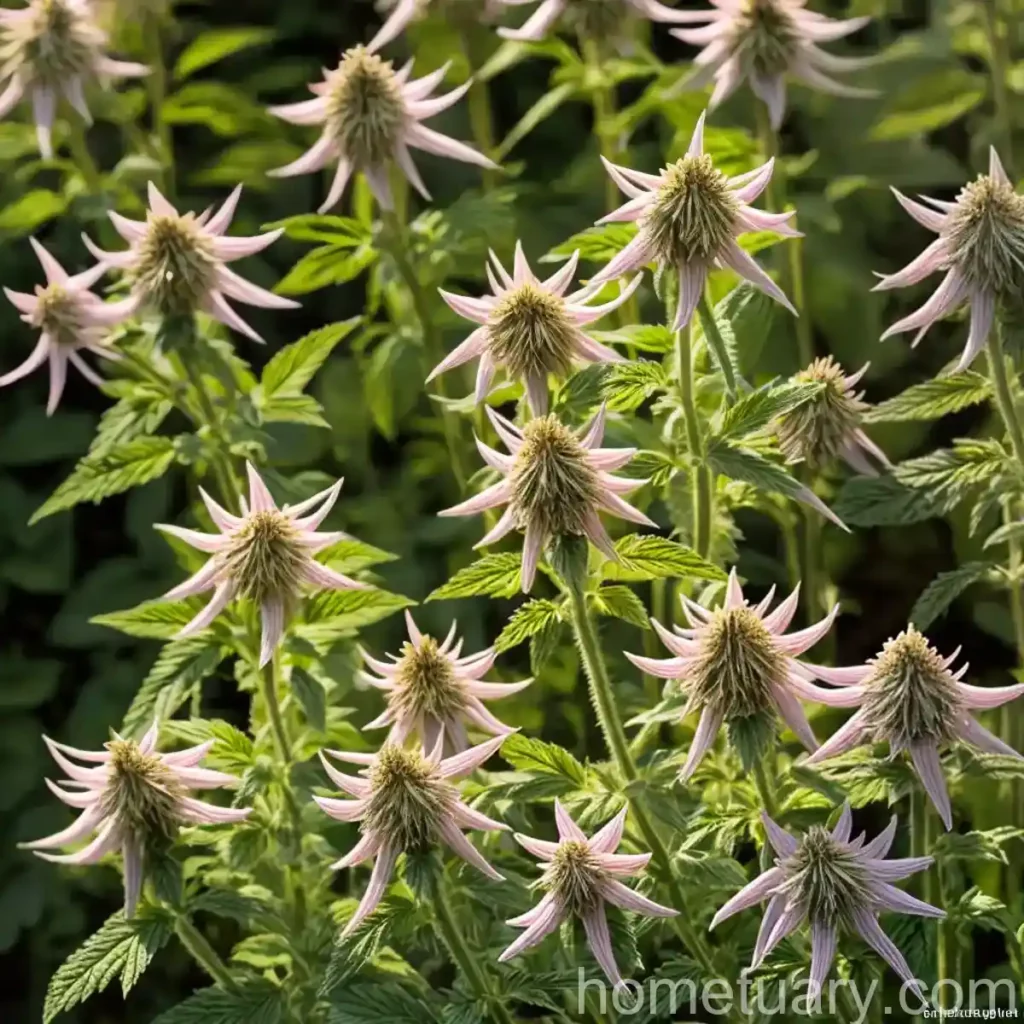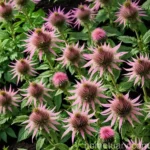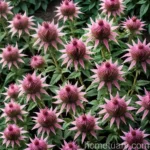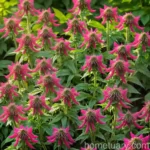Plant Spotlight: Wild Bergamot (Monarda ‘Petite Delight’)
Introduction
Welcome, plant enthusiasts! In this article, we’ll delve into the captivating world of wild bergamot (Monarda ‘Petite Delight’). From its cultural significance and uses to its care requirements and propagation methods, there is much to uncover about this delightful plant. Join me as we explore the key takeaways, fascinating facts, and essential tips for cultivating wild bergamot.
What is Wild Bergamot (Monarda ‘Petite Delight’)?
Wild Bergamot, scientifically known as Monarda, is a genus of flowering plants in the mint family (Lamiaceae). The ‘Petite Delight’ variety, in particular, is cherished for its stunning, showy flowers and aromatic foliage. With its rich history of medicinal and culinary uses, as well as its value in wildlife gardens, wild bergamot has secured a special place in both natural and cultivated landscapes.

Image: Beautiful Wild Bergamot Flowers
Key Takeaways
Before we dive deeper into the specifics of wild bergamot, let’s highlight some key takeaways to set the stage for our exploration.
Wild Bergamot (Monarda ‘Petite Delight’)
- Botanical Name: Monarda ‘Petite Delight’
- Common Names: Wild Bergamot, Petite Delight Monarda
- Plant Type: Herbaceous Perennial
- Flowering Season: Summer to Early Fall
- Sunlight Requirements: Full Sun to Partial Shade
- Watering Needs: Moderate
- Soil Type: Well-Drained, Rich
- Height: 12-18 inches
- Spread: 12-18 inches
With these key points in mind, let’s delve into the various aspects of wild bergamot, from its culture and uses to its care requirements and fun facts.
Culture
Uses
Culinary Uses
- The leaves of wild bergamot are prized for their minty, citrusy flavor and are often used in teas, salads, and as a garnish for desserts.
- The flowers can be used to infuse beverages or to add a unique flavor to various culinary creations.
Medicinal Uses
- Wild bergamot has a long history of medicinal use by Indigenous peoples, often employed for its antiseptic and soothing properties.
- It is used in herbal remedies for ailments such as sore throats, colds, and respiratory issues.
Wildlife Gardens
- As a nectar source, wild bergamot attracts an array of pollinators, including bees, butterflies, and hummingbirds, making it a valuable addition to wildlife-friendly gardens.
- Its aromatic foliage and vibrant blooms also contribute to the overall biodiversity of the garden.
Water
Wild bergamot thrives in moderately moist conditions and should be watered regularly, especially during dry spells. It is essential to ensure that the soil remains consistently moist but not waterlogged.
Sunlight
While wild bergamot prefers full sun, it can also tolerate partial shade. When grown in full sun, it tends to produce more abundant blooms and maintains a compact growth habit. In partial shade, it may exhibit slightly taller growth and less prolific flowering.
Fertilizer
Wild bergamot generally does not require heavy feeding. A balanced, all-purpose fertilizer applied in early spring as new growth emerges can provide the necessary nutrients for healthy development and robust flowering.
Soil
The ideal soil for wild bergamot is well-drained and nutrient-rich. It thrives in slightly acidic to neutral soil pH levels. Organic matter, such as compost, can be incorporated into the soil at planting to enhance its structure and fertility.
Pruning
Pruning is essential for promoting the overall health and appearance of wild bergamot. This can entail deadheading spent flowers to encourage additional blooms, removing diseased or damaged foliage, and cutting back the plant in late fall or early spring to rejuvenate its growth.
Propagation
Wild bergamot can be propagated through various methods, including division, stem cuttings, and seed sowing. Each approach offers distinct advantages and considerations, allowing for flexibility in propagation based on the gardener’s preferences and resources.
Container Popularity
Given its compact size and attractive appearance, wild bergamot is well-suited for container gardening. It not only adds visual interest to outdoor spaces but also provides a practical option for those with limited garden areas.
Container Common Diseases
When grown in containers, wild bergamot may be susceptible to certain diseases, including powdery mildew and leaf spot. These conditions can arise from inadequate air circulation, high humidity, or moisture on the foliage.
Disease Diagnosis
Early signs of disease in wild bergamot may manifest as powdery, white patches on the foliage (indicative of powdery mildew) or as dark spots and lesions on the leaves (suggestive of leaf spot). Regular monitoring and prompt action are crucial in managing and preventing these issues.
Common Pests
While wild bergamot is generally resistant to most pests, it may occasionally encounter challenges from spider mites, aphids, and certain caterpillars. Vigilance in pest detection and implementing appropriate control measures are essential for mitigating potential damage.
Botanist’s Tips
Garden Design
Integrating wild bergamot into garden designs offers an array of possibilities, whether in herbaceous borders, pollinator gardens, or mixed perennial beds. Its compact stature and vibrant blooms make it an excellent choice for adding color and texture to diverse garden settings.
Pollinator Garden
As a valuable source of nectar, wild bergamot holds a prominent place in pollinator gardens, attracting bees, butterflies, and other beneficial insects. Placing it alongside other nectar-rich plants can create a thriving habitat for these essential pollinators.
Fun Facts
- The leaves of wild bergamot were historically used by Native American tribes, including the Menominee and Winnebago, as a seasoning and for medicinal purposes.
- Monarda ‘Petite Delight’ is known for its charming, fragrant flowers that closely resemble those of its larger wild bergamot relatives, making it a captivating addition to gardens and landscapes.
- The aromatic foliage of wild bergamot releases a delightful citrus scent, adding to its allure and sensory appeal in outdoor spaces.
- In addition to its herbal and culinary applications, wild bergamot is valued for its role in natural dye production, yielding vibrant shades of pink and purple from its flowers.
Links to External Resources
For further exploration of wild bergamot and its various facets, you may find the following resources insightful:
- Wild Bergamot: A Guide to Growing and Care
- Understanding Monarda ‘Petite Delight’: Characteristics and Uses
- Cultivating Native Plants for Wildlife Gardens
In conclusion, wild bergamot (Monarda ‘Petite Delight’) stands as a remarkable plant with an array of cultural, culinary, and ecological significance. Its unique attributes, from fragrant flowers to medicinal properties, make it a captivating addition to gardens and natural landscapes. With a deeper understanding of its culture, uses, and care requirements, plant enthusiasts can embark on the rewarding journey of nurturing and appreciating this beloved herbaceous perennial.
Join us in celebrating the botanical marvel that is wild bergamot, and let its beauty and benefits flourish in your green spaces!















